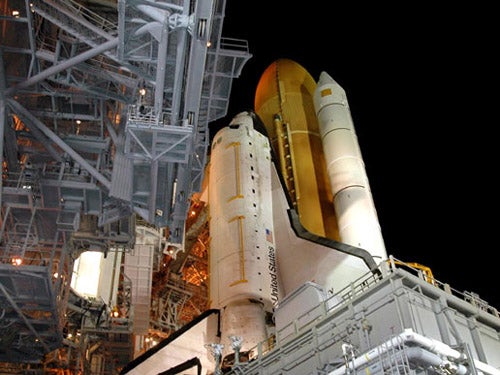NASA has set the launch of the space shuttle Discovery for a period that begins May 22 and ends June 3. This pushes back the earliest launch date by a week. In a briefing for reporters April 20, NASA shuttle program manager Bill Parsons explained the decision was made at a design certification review April 19. Said Parsons, “This gives us more breathing room.”
The next critical step in NASA’s returning the shuttles to space is a detailed flight readiness review to be held May 10 and 11. Out of that review will come the final choice for a launch date. Parsons said, “Knowing what I know now, we’d launch on May 22.”
Launch windows last about 5 minutes each day. On May 22, the launch time would be 1:03 p.m. The launch window slips earlier by 22 or 23 minutes every day, driven by the orbit of the International Space Station. The ISS will be used as a safe haven in the event of a launch emergency.
Parsons notes that the closing of the launch period could slip “a few days” past June 3. The date is affected by the need for mission controllers to have enough light to observe and photograph the separation of the shuttle from its giant external tank. While lighting wouldn’t be ideal past June 3, it would remain usable for several days more.
At the briefing, deputy shuttle program manager Wayne Hall noted three issues remained outstanding regarding debris coming off the external tank, which caused the loss of the shuttle Columbia and its crew in February 2003. But Hall said he expected they would be resolved by launch time, and Parsons echoed the thought, “I’m confident the team has its arms around this.”
Discovery will launch, however, without a tested thermal-tile patch kit, the inclusion of which was one of the recommendations of the Columbia Accident Investigation Board. Parsons noted that Discovery’s flight will test a patch kit in orbit.
Asked point-blank if the management and engineering errors that led to the Columbia disaster had been fixed, Parsons said, “This is a very different program than we had three years ago.”










